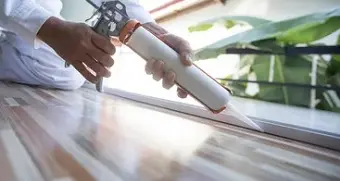Exploring the Global Polyurethane Sealants Market: Trends, Growth Drivers & Challenges
10 Apr 2023 • by Natalie Aster

Polyurethane sealants are elastomers that are made from polyurethane polymers and used for sealing joints and gaps between different substrates, such as metals, plastics, wood, and concrete. They are available in different forms, including one-component (1K) and two-component (2K) systems, which can be applied by spraying, brushing, or caulking. Polyurethane sealants offer several advantages over other sealants, such as silicone and acrylic, including high tensile strength, low shrinkage, and excellent adhesion to various substrates. They are widely used in the construction, marine, aerospace, automotive, and electronic industries due to their superior properties and versatility.
Types of Polyurethane Sealants
Polyurethane sealants can be classified into different types based on their chemical composition, cure mechanism, and application methods. The most common types of polyurethane sealants are:
One-Component Polyurethane Sealants
One-component polyurethane sealants (1K) are pre-polymerized systems that contain isocyanate and polyol components in a single package. They cure by reacting with moisture in the air or substrate, forming a durable and elastic seal. 1K polyurethane sealants are easy to use, require no mixing or heating, and have a long shelf life. They are suitable for sealing joints in construction, automotive, and marine applications, where high performance and fast curing are required.
Two-Component Polyurethane Sealants
Two-component polyurethane sealants (2K) are formulated by mixing separate isocyanate and polyol components before application. They cure by a chemical reaction between the components, producing a strong and flexible bond. 2K polyurethane sealants offer higher performance than 1K sealants, including faster curing, better adhesion, and resistance to chemicals and UV light. They are commonly used in applications that require high strength, durability, and weatherability, such as automotive body sealing, construction joints, and wind turbines.
Silylated Polyurethane Sealants
Silylated polyurethane sealants (SPUR) are hybrid polymers that combine the properties of polyurethane and silane components. They cure by reacting with moisture in the air or substrate, forming a chemical bond that is resistant to water and chemicals. SPUR sealants offer several advantages over traditional polyurethane sealants, including better adhesion to difficult substrates, such as glass, aluminum, and painted surfaces, and faster curing. They are widely used in construction, automotive, and industrial applications.
Applications of Polyurethane Sealants
Polyurethane sealants have a broad spectrum of applications in various industries due to their excellent properties and versatility. Some of the common applications of polyurethane sealants are:
Construction Industry
Polyurethane sealants are extensively used in the construction industry for sealing joints, cracks, and gaps in buildings, bridges, roads, and other structures. They provide excellent flexibility and adhesion, which helps to prevent water leakage, air infiltration, and sound transmission. Polyurethane sealants are used in construction applications such as concrete joints, expansion joints, window frames, roofing, and flooring.
Automotive Industry
Polyurethane sealants play an essential role in the automotive industry for sealing body joints, seams, and gaps in vehicles. They offer superior adhesion, flexibility, and durability, which helps to prevent water and air leakage, reduce vibration and noise, and improve the overall performance of the vehicle. Polyurethane sealants are used in automotive applications such as windshield bonding, body panel bonding, and underbody coating.
Marine Industry
Polyurethane sealants are extensively used in the marine industry for sealing joints and gaps in boats, ships, and other marine structures. They offer excellent resistance to water, salt, and chemicals, which helps to prevent corrosion, water leakage, and damage to the structure. Polyurethane sealants are used in marine applications such as hull sealing, deck caulking, and bonding of marine accessories.
Aerospace Industry
Polyurethane sealants are adopted in the aerospace industry for sealing joints, gaps, and seams in aircraft, satellites, and other aerospace structures. They offer high strength, flexibility, and resistance to extreme temperatures, which helps to prevent water and air leakage, minimize vibration, reduce noise, and also improve the overall performance of the aircraft. Polyurethane sealants are used in aerospace applications such as aircraft windows, door seals, and fuel tank sealing.
Electronic Industry
Polyurethane sealants are used in the electronic industry for encapsulating and protecting electronic components from moisture, dust, and other environmental factors. They offer excellent thermal conductivity, electrical insulation, and adhesion, which helps to prevent corrosion, short circuits, and other electrical failures. Polyurethane sealants are used in electronic applications such as circuit board coating, potting, and bonding of electronic devices.
Market Trends & Opportunities
The world’s polyurethane sealants market is projected to expand at a CAGR of 4.1% during 2023-2028, driven by increasing demand from emerging economies, growing automotive production, and rising construction activities. The introduction and increasing penetration of eco-friendly and sustainable polyurethane sealants are also poised to drive the market growth. The demand for high-performance sealants for aerospace and electronic applications is also expected to create lucrative growth opportunities for the market participants. However, volatile prices of raw materials and stringent regulations associated with the use of polyurethane sealants may hamper the market growth. The increasing competition from alternative sealant materials such as silicone and acrylic may also pose a challenge to the market players. To sustain in the market, the players are focusing on product innovation, expansion of their product portfolio, and strategic collaborations and partnerships. The development of bio-based and recyclable polyurethane sealants is also gaining traction among the market players.
Market Segmentation
The market is segmented by type, application, end-use industry, and region. The one-component polyurethane sealants segment is forecast to dominate the market due to its ease of use, low cost, and versatility. The construction industry is the largest end-user of polyurethane sealants, followed by the automotive and marine industries. APAC is the largest regional market for polyurethane sealants, driven by rapid industrialization, urbanization, and infrastructure development.
Product Details:
Polyurethane Sealants Market by Type, End-Use Industry, and Region - Global Forecast to 2027
Published: March 2023
Pages: 186
Price: US$ 4,950.00
CONTACTS
The Market Publishers, Ltd.
Natalie Aster
Tel: +357 96 030922
Fax: +44 207 900 3970
[email protected]
MarketPublishers.com
Analytics & News
